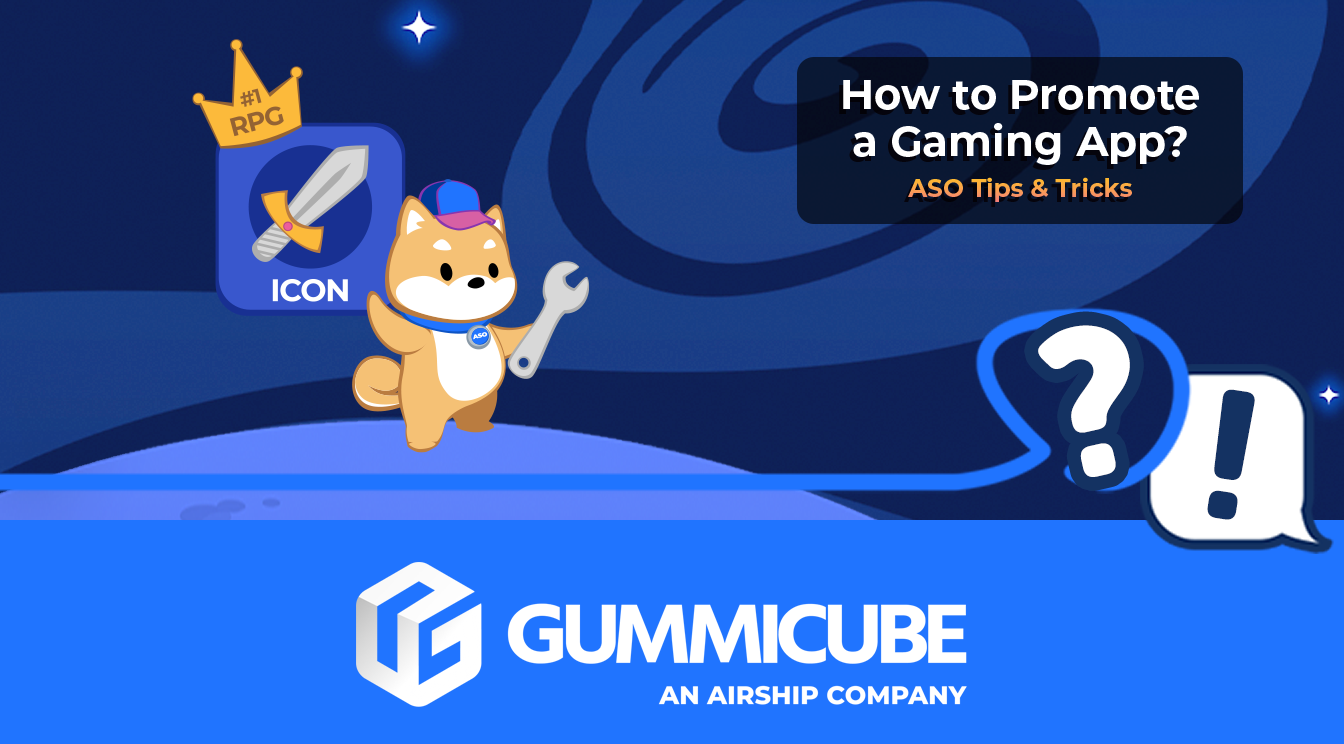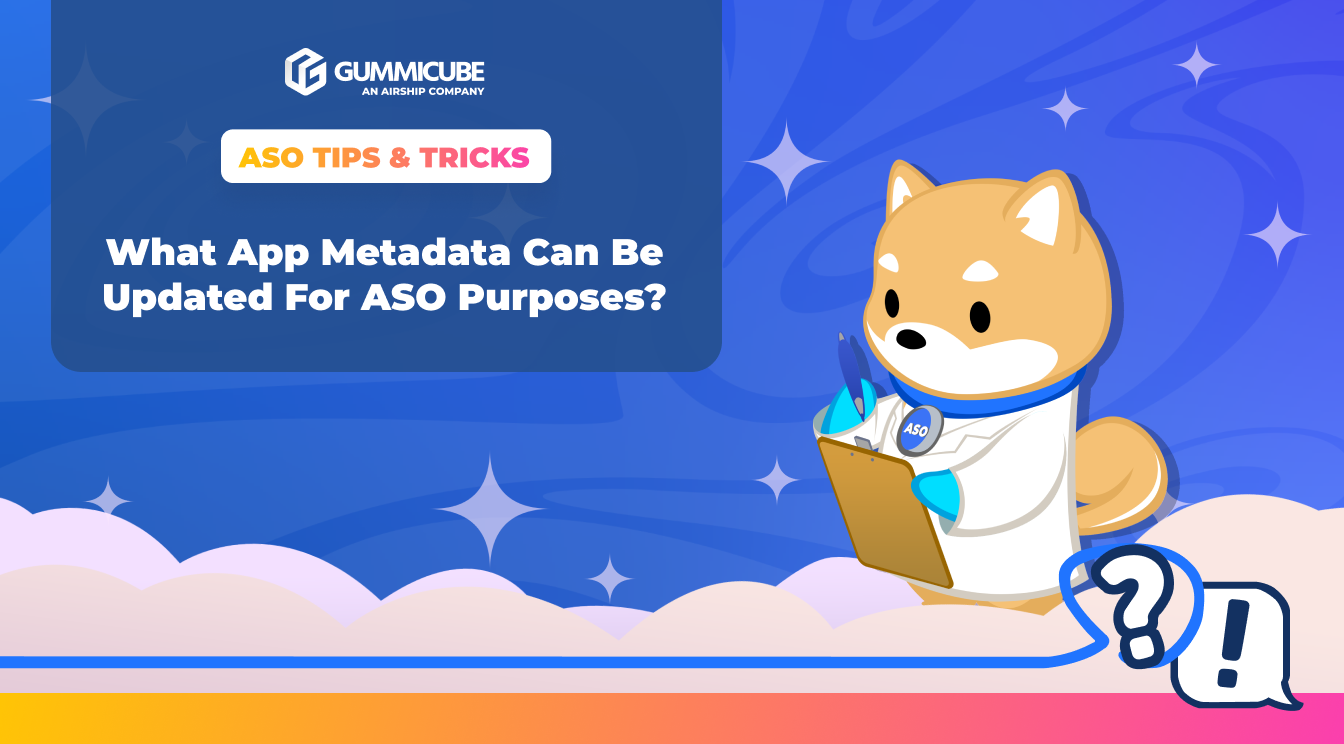
What To Do If Your In-App Event Gets Rejected
Posted on December 19th, 2025
By evaluating the feedback from a rejected In-App Event, app developers can resubmit and gain approval. If you are looking to refine your IAE, reach out today.

In the ultra-competitive gaming app landscape, getting noticed is half the battle. With millions of games available across iOS and Android, building a standout presence takes more than a compelling concept. It requires strategic planning, creative execution, and expert-level App Store Optimization (ASO). Whether you're launching a simulation game or delving into the world of strategy games, the success of your gaming app depends on how well it's positioned to capture user attention and drive installs.
Below, we will explore how to promote a gaming app with authoritative ASO strategies tailored to the unique dynamics of the gaming category. From mastering keyword targeting to designing eye-catching creatives, leveraging seasonality, and refining your metadata, we break down what it takes to maximize visibility and conversion in a crowded market.
App keyword targeting remains one of the most fundamental elements of ASO. For gaming apps, it’s not just about visibility. It’s about attracting the right players. The keyword space for gaming is saturated, making strategic precision more critical than ever.
Start by targeting:
Avoid inventing new descriptors for gameplay that sound flashy but don’t match real search behavior. Focus on relevant medium to high volume terms that align with your player profile. These terms bring in users who are more likely to engage and retain.
Make app keyword updates a regular part of your optimization routine. Trends evolve quickly in mobile gaming, and new opportunities can open up overnight, especially around popular titles, memes, or viral gameplay mechanics. A weekly or bi-weekly keyword performance review can help your game stay current and competitive.
Gaming titles and subtitles should do more than just identify your app. They must convey value instantly. Use your title and subtitle to:
For example, a puzzle app titled "Puzzle Quest" could use a subtitle like "Match 3 Adventure with Daily Challenges." This targets both core gameplay and engagement features in one compelling line.
Your iOS keyword field (and Google Play long description) should reinforce the same messaging, written for discoverability and relevance. Prioritize clarity over keyword stuffing and update regularly based on performance.
Metadata is also the foundation of your game’s brand in the store. Make sure it reflects the excitement, tone, and core experience users can expect once they download.
Your app screenshots are what will visually sell your app to new viewers. In gaming, where first impressions matter and the category is intensely visual, app screenshot optimization can make or break your conversion rate.
Follow these best practices:
Your screenshots should showcase in-game action with high-resolution assets. Make sure you’re clearly showing actual gameplay. This isn’t just for users, but it’s also essential for Apple’s review process. Use bold colors, cohesive themes, and consistent branding. Feature scenes with your app’s specific characters, app environments, or unique gameplay mechanics that players will experience.
You can use clear iPhone or Android device mockups that contextualize the experience or zoom in on an app feature. This helps users visualize the game in action and can increase trust and familiarity.
Overlay short, benefit-driven captions that highlight core gameplay or features. Avoid overloading screenshots with text. Keep it readable, enticing, and relevant to player interests.
Sequencing and Flow for App Creatives
Think of your screenshots as a narrative. The first three images matter most for conversion, so use them to grab attention with your best gameplay or most differentiated feature.
It’s crucial to ensure your screenshots accurately reflect real gameplay. Games can be rejected by Apple if screenshots appear doctored or misleading. Include visuals of the game’s user interface (UI), such as health status bars, score counters, or action buttons, to demonstrate authenticity and avoid compliance issues.
For games with dynamic visuals or real-time action, app preview videos are essential. Highlight core mechanics, pace, and excitement. Keep it short, branded, and optimized for silent autoplay. Platforms like iOS have strict guidelines, so keep app store video rules in mind.
Gaming users often browse visually, so your creatives must deliver the hook within seconds. Mobile app A/B testing variations is crucial. Be sure to swap creative assets regularly and experiment with different characters, mechanics, and top features. Test what works based on search volume versus in-game popularity.
Your icon is the first impression your game makes, both in search results and on the user’s device post-download. It should be:
Icons that feature a recognizable character or a key item from gameplay often perform well. Be mindful of genre conventions while avoiding blending in too much with competitors.
Gaming icons are frequently updated seasonally to reflect special events or new content. This keeps your app looking fresh and encourages returning users to re-engage.
Seasonality plays a major role in gaming app performance. Players can expect new content and engagement hooks that align with holidays, seasons, or major cultural moments.
Use the following tactics to leverage seasonality:
Promote in-game events through your metadata and creatives. For example, a Halloween event in October should be reflected in your app screenshots, app subtitle, or app store video.
Notify players of upcoming or ongoing seasonal content. This encourages lapsed users to return and drives stronger in-game engagement.
Update keywords to reflect seasonal gameplay elements, like "holiday update" or "Christmas levels." Similarly, refresh your creatives to showcase any themed assets or new gameplay. This helps surface your app to users searching for seasonal experiences and signals to app stores that your app is current.
Consider updating your app icon and in-game UI to reflect seasonal aesthetics. This reinforces relevance and makes your app feel timely and actively maintained.
Not only does this boost visibility during high-traffic periods, but it also contributes to better overall rankings by improving engagement and retention.
While this blog focuses on organic strategies, it’s worth noting how paid user acquisition (UA) and ASO support each other.
When your ASO elements are optimized, your paid campaigns convert more efficiently. Likewise, an influx of users from ads (especially high-retention ones) can improve your keyword rankings due to elevated engagement metrics.
Gaming apps should:
The key is not to silo your efforts. By integrating paid insights into your ASO strategy, you create a strategy that sharpens both acquisition channels.
Gaming apps that rise in rankings are rarely static. The most successful teams are constantly testing, analyzing, and adapting.
Schedule monthly or bi-weekly reviews of:
Track how new features, updates, or events impact performance. If a new game mechanic is added, reflect that in your creatives and metadata. If your user base shifts from casual to more competitive players, refine your messaging accordingly.
You should also ensure the terminology in your store listing matches what players expect. Use relevant, specific terms for genres, mechanics, and game modes rather than generalities or filler keywords. This improves pre-download understanding, which directly supports long-term retention.
Game audiences evolve quickly. Meta trends change, art styles shift, and gameplay preferences cycle in and out. If your app store listing doesn’t reflect those changes, you risk falling behind.
Promoting a gaming app goes far beyond launching a fun title and hoping it catches fire. It demands a strategic approach to App Store Optimization, rooted in data, creativity, and consistency.
By investing in keyword targeting, crafting compelling creatives, leveraging seasonality, and maintaining an agile optimization routine, developers can maximize discoverability and drive sustainable install growth. App screenshots, icons, and metadata all play a crucial role in how your game is perceived and downloaded.
Whether you're launching your first game or scaling a growing portfolio, success starts in the store. ASO is your most powerful tool. When done right, it creates a competitive edge that advertising alone can’t match.
At Gummicube, we’ve helped top mobile gaming brands break into the charts with data-driven App Store Optimization services that match the speed and complexity of the mobile gaming market. If you're ready to elevate your app store presence and turn your game into a category success, we’re here to help.
Let’s talk about how we can support your team with expert ASO strategy, creative optimization, and ongoing growth management.

By evaluating the feedback from a rejected In-App Event, app developers can resubmit and gain approval. If you are looking to refine your IAE, reach out today.

App keyword research is a crucial part of developing a winning ASO strategy. Read more to discover ASO tools & strategies to elevate your app listing.

Optimizing metadata is one of the most high-impact actions developers can take to strengthen their App Store presence. Read more to discover winning strategies.